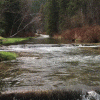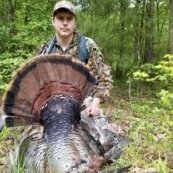-
Content Count
446 -
Joined
-
Last visited
Community Reputation
0 NeutralAbout Flicted
-
Rank
Advanced Member
- Birthday 07/01/1961
Previous Fields
-
Favorite Species
Crappie
-
Security
22
Profile Information
-
Location
LaVista, Nebraska
Recent Profile Visitors
11,546 profile views
-
There is a synthetic material that looks like fur and youre looking for an alternative. I guess that makes it fake, fake fur. Ever thought of using real fur as an alternative to craft fur?
-
Size 14, 12 I use the fluff from saddle hackle in place of the marabou.
-
amen There are bugger variants though he bugger which could include and mean variants not just the traditional woolly bugger. My point exactly. Rabbit is a soft fur that moves great in the water. I use it for micro jigs and many flies. Opossum is another great material that is longer but works great for wooly bugger variants.
-
A wooly bugger is marabou, chenille, hackle. My favorite Willy bugger variant tail is rabbit.
-
As an Air Force retiree, I cant stop looking at that. I may build my next rod similar to that. I will also show that to the Project Healing Waters people that I will be teaching rod building to. Thanks.
-
I have to say that is beautiful.
-
Agree
-
No need to get defensive again. You should expect many opinions when you ask a question about tying a popular fly to a large forum of seasoned fly tiers. You do good work and make good videos. But you cant expect us to all agree on anything. Most of us are old.
-
I had a couple trees taken out this summer but the neighbors provide enough leaves for my garden. I use a wire 4x4 foot cage as a compost pile. In the fall, I turn all the compost into the soil and then use the cage to pack leaves in 4x4 blocks in the back of the garden. Late fall and winter moisture rots some of it. Then in spring as things come up, I use the leaves as mulch to keep weeds down and moisture in. Then the cage is used for compost all spring and summer. By fall, the leaf mulch is all broken down. Clean off all the garden waste at the end of the season and repeat the process.
-
When I do rarely use a small bobber, I use a slip bobber. I often fish in 15-30 feet of water. Depends on the depth of course but many times the small clip on bobbers are used for tip-ups where you usually retrieve them by hand lining.
-
I use slip bobbers in other fishing but never in ice fishing. I use spring bobbers for dead sticking. For a depth finder, years ago I built a stand for a cheap depth finder and battery out of thin plywood with a 1x3 leg that goes down the ice hole with the transducer. Works great but I have seen where panfish were so packed in there that depth might look 17 feet and then an hour later, it's 21 feet. Recently, I got a Deeper 3.0. It's a ball the size of a baseball that floats in the hole and sends signals to a phone via Bluetooth. I set up an old tablet that we don't use anymore and use it as my display. It has a round flasher display, standard sonar, and a vertical flasher if you want it. Very nice display and there are no cables to interfere with landing a fish. I have also used a "Fishin Buddy" I think it's called. It's a clamp on depth finder that has a side-finder as well. Can be pretty handy finding suspended crappies.
-
Upon further study, it appears the second picture may be a blurry picture of some slip bobber rigs. Rubber egg shaped beads with a glass bead. Run your line through the wire loop and then pull the bead and rubber stop onto your line. Then add slip bobber and then split shot and hook.
-
Top one is commonly referred to as a depth finder. Clip it on your terminal tackle and quickly determine depth. Then you can set a bobber or tip-up depth quickly. The bottom one is a blurry tree ornament from Whoville. I saw it on the Grinch last night.
-
... and that.
-
With a Humpy (also with a Tom Thumb), I trim to length before tying in and cinch the cut ends tight, taking a few wraps through the flared tips. Then loosen up on the wraps back towards the tail. That helps with buoyancy. Then at the tail, I cinch down tight again. You can encircle the clump as Captain described. That will help.


